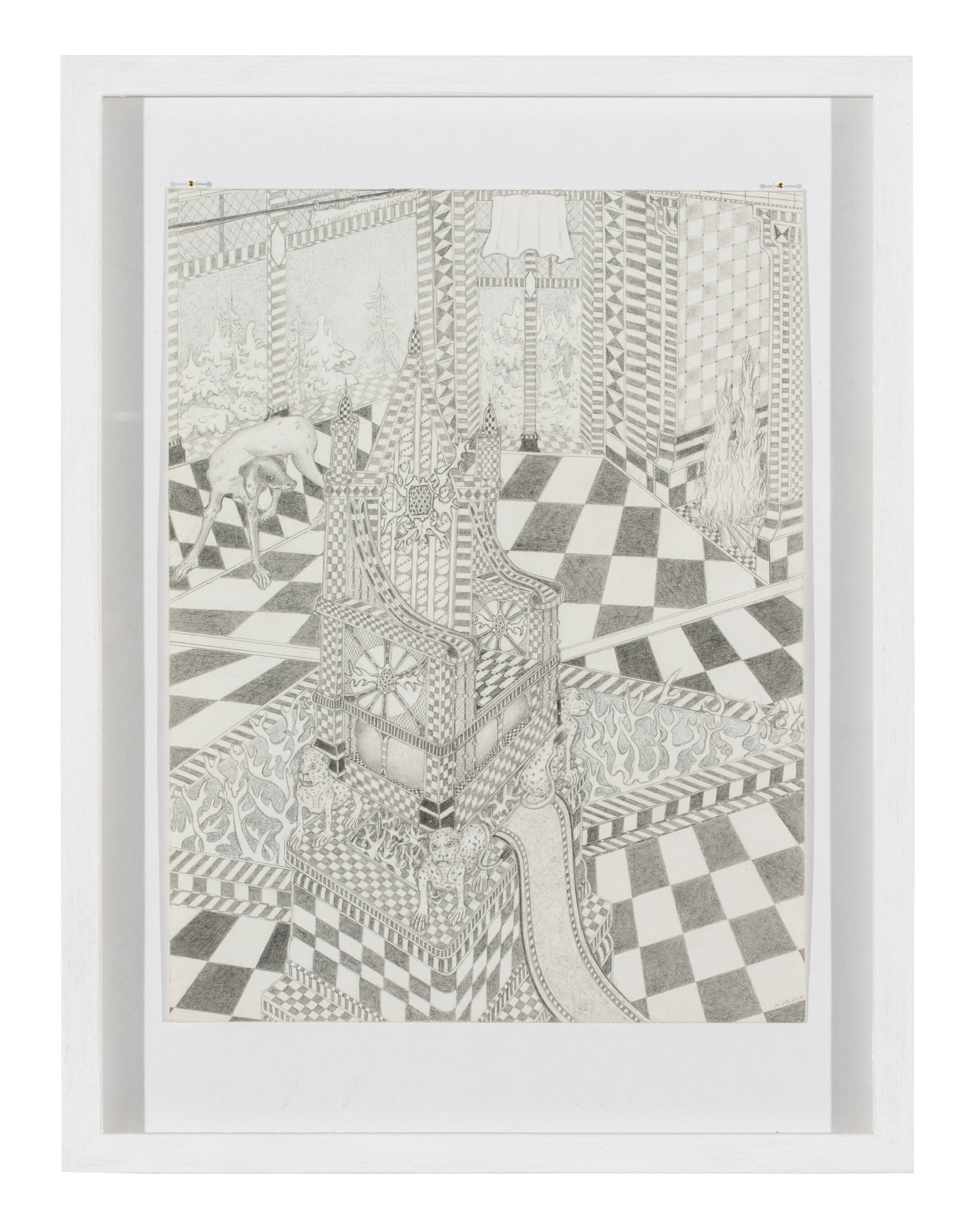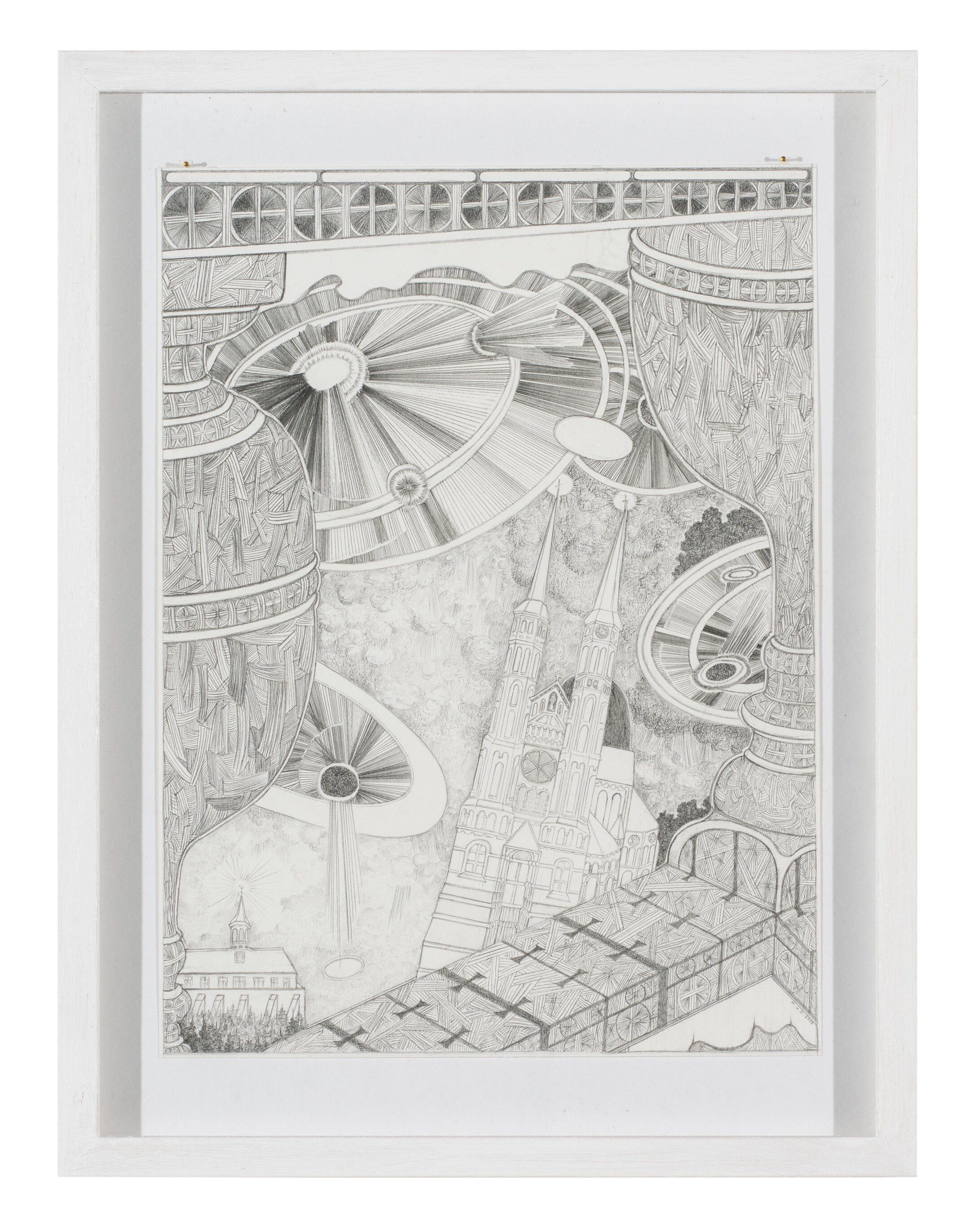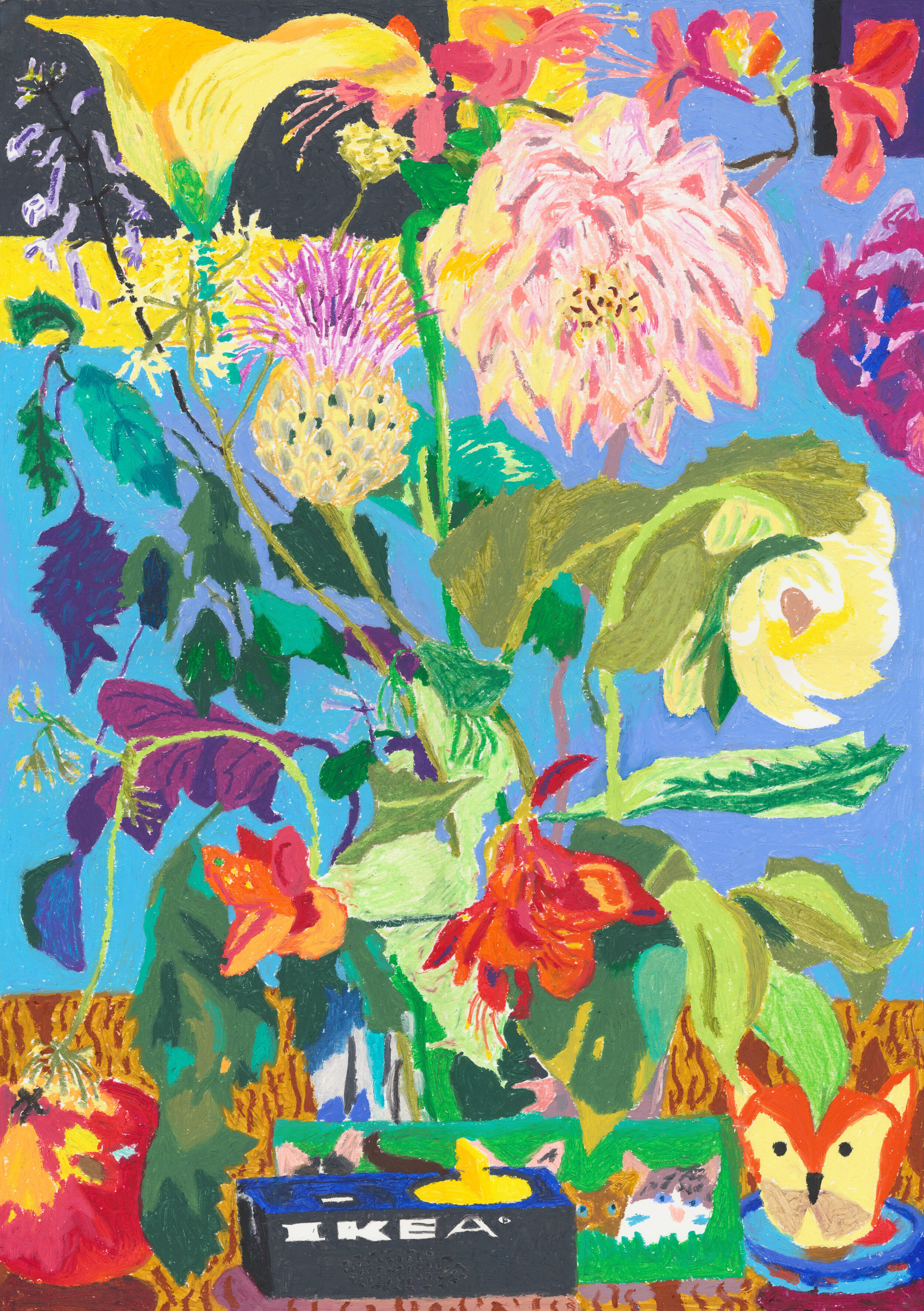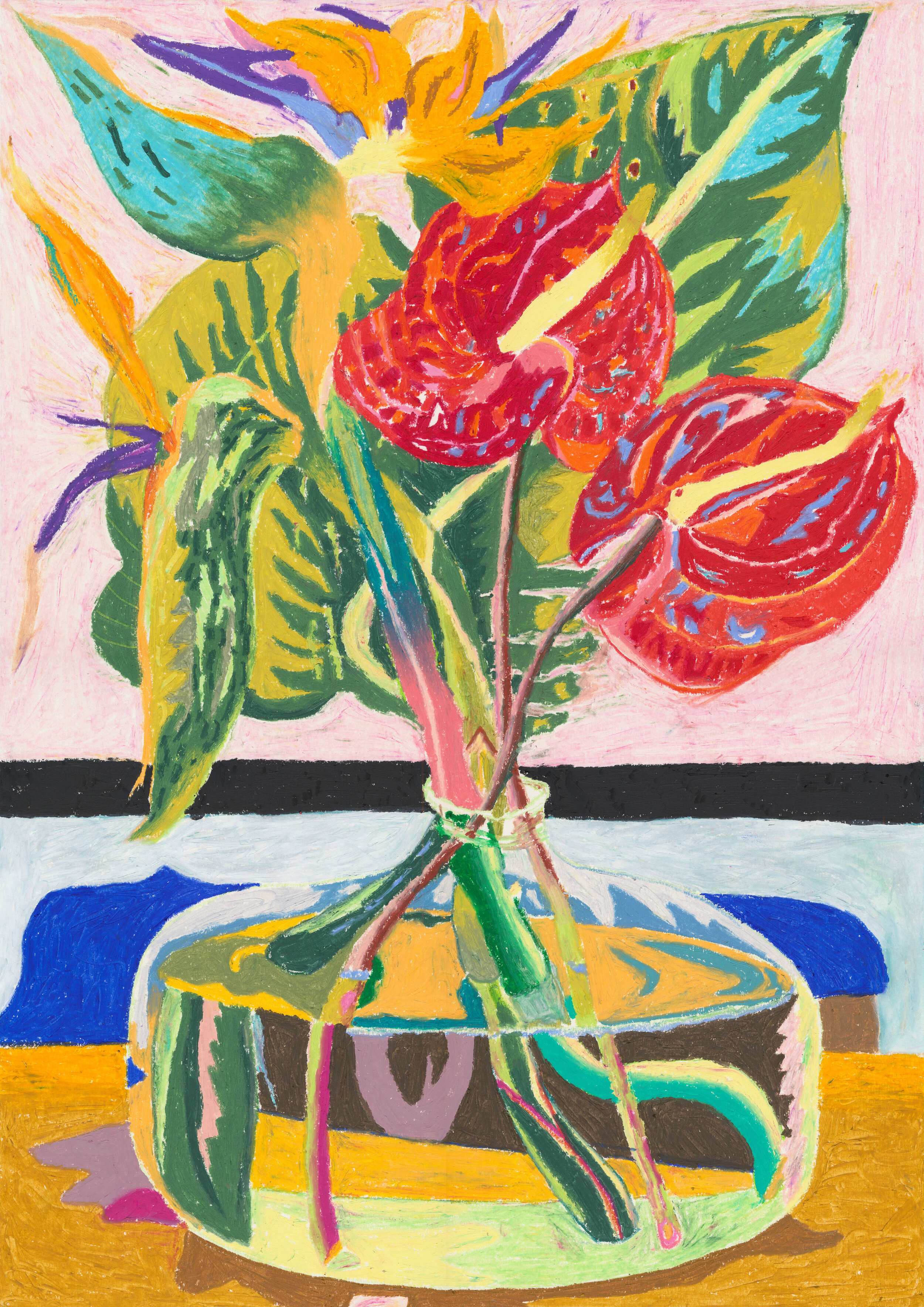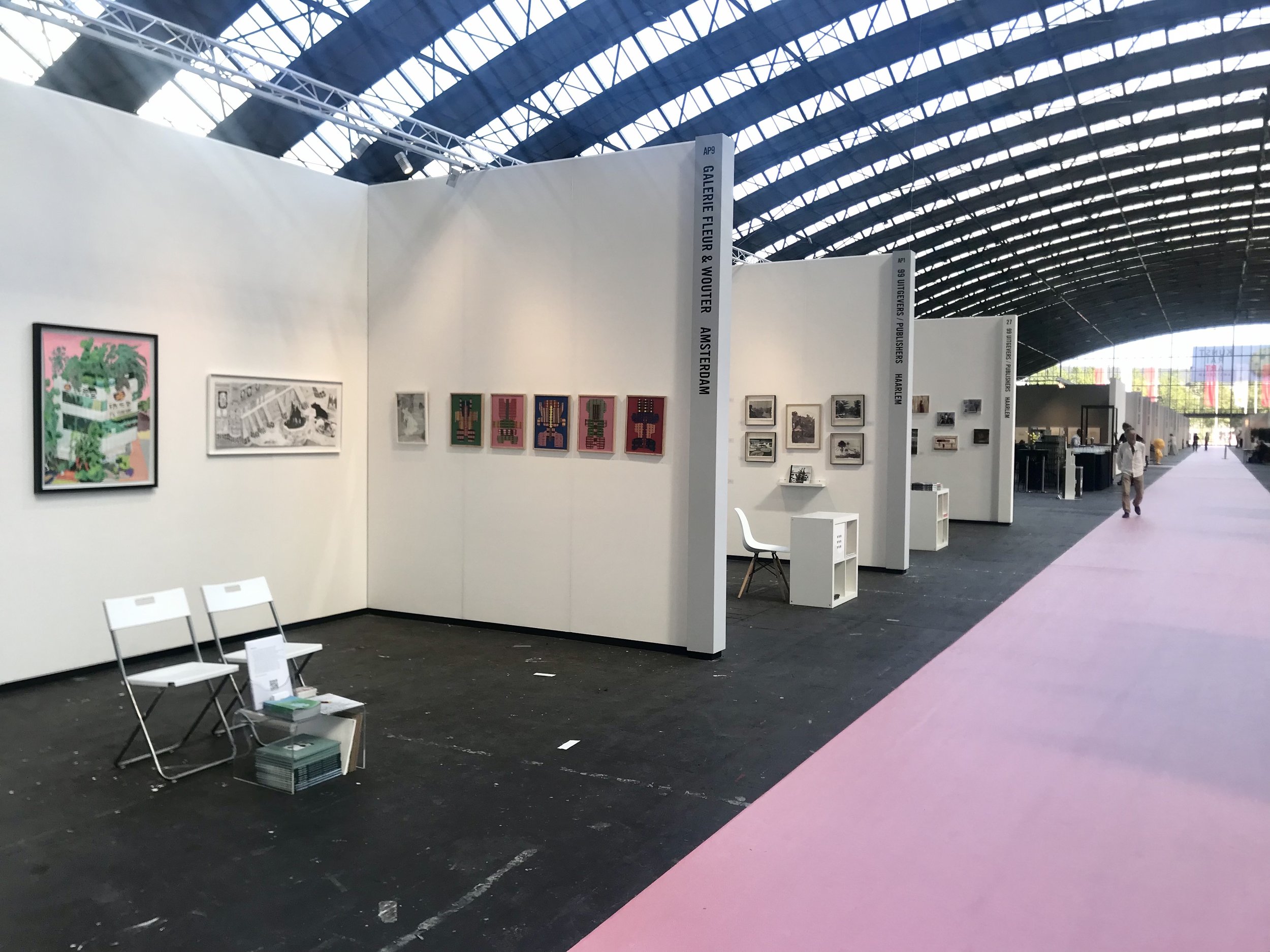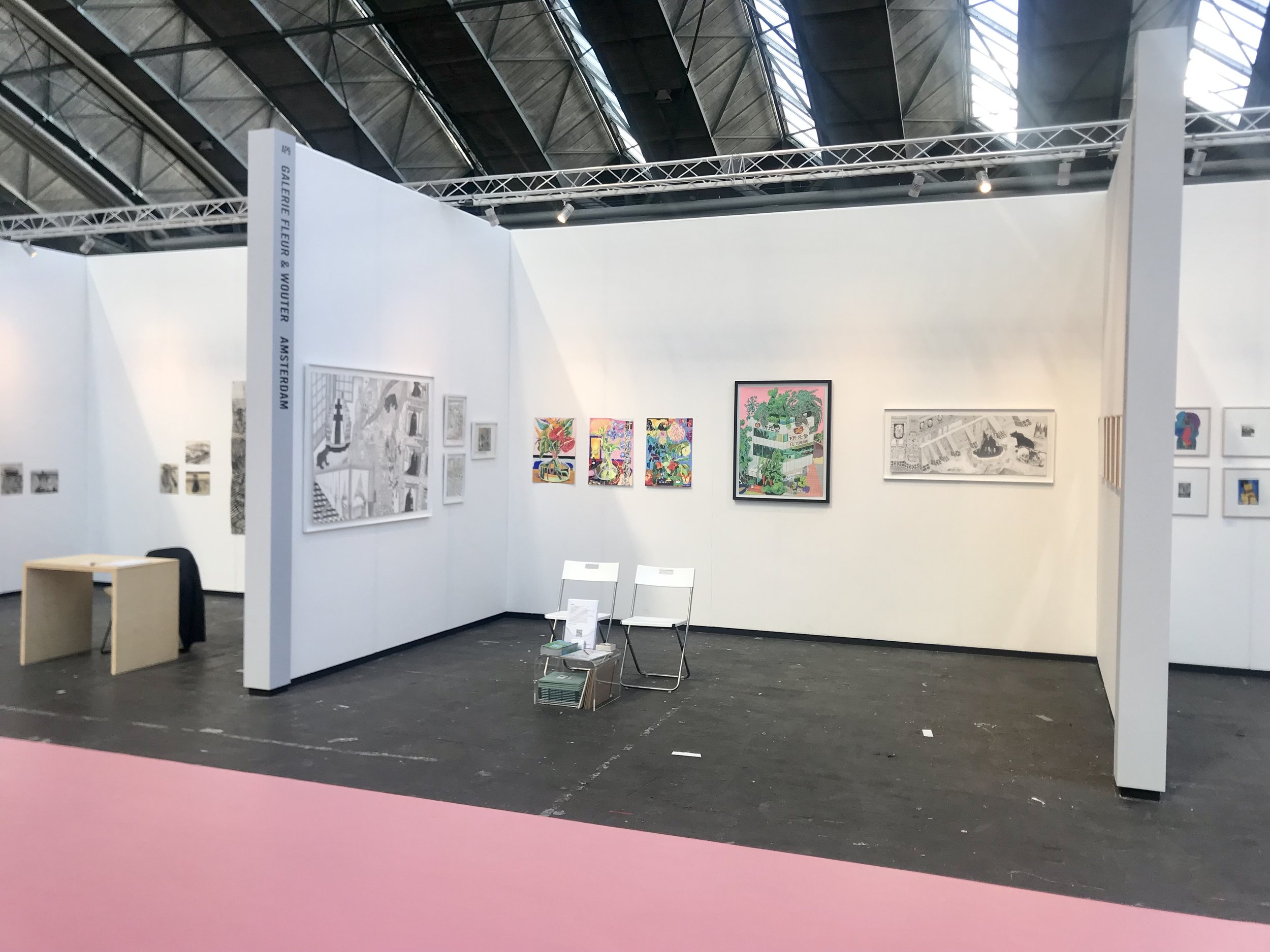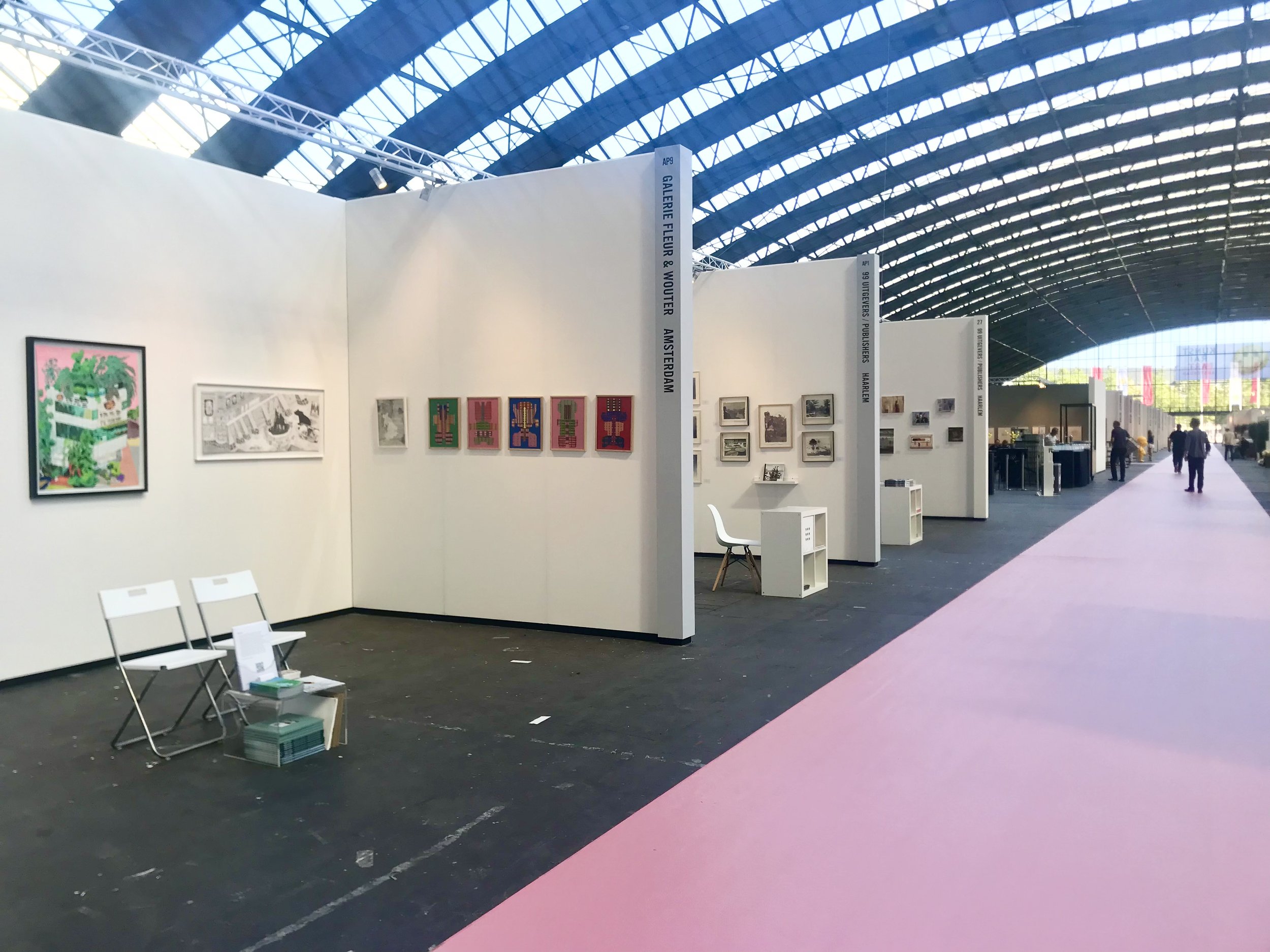We are happy to participate in this year’s Art on Paper that will take place from 8 to 12 September. At the fair we will be presenting work on paper by Mai van Oers, Saar Scheerlings and Johan Kleinjan. You will find us in stand number AP9.
Mai van Oers
The drawings of Mai van Oers are worlds in which familiar elements together form an alienating image. Cathedrals, tombs, fairytale figures and animals live in environments full of structures that can sometimes be traced back to reality and sometimes follow their own logic. Mai starts her drawings without a preconceived plan, during the process references arise, such as her childhood with the nuns, art historical sources of inspiration are integrated, such as the Tres Riches Heures of the Duc de Berry, but also what influences her life at that moment finds a place on the paper.
Johan Kleinjan
Johan Kleinjan (1974) works in a characteristic unpolished style with a special use of colour. His works of art originate from his fascinations, which can consist of strange everyday things. To name a few: Formula 1, the participants of Tempation Island and victims of the Stalin terror. Johan also has a fascination for plants, to be more specific, ’krisisplanten’: plants left behind on the street that are given a new life and are being cared for in Johan's studio. He treats the leftover bunches of flowers he receives from a local flower shop in the same loving way. He draws them with pastel chalk to give them eternal life on paper. He gave this series the title Bedankt voor die bloemen, as a tribute to the Pope.
Saar Scheerlings
Unfolding a tea box provided Saar Scheerlings (Eindhoven, 1990) a form. She decided to paint it the way she saw at a weavers' village in the Himalayas. These forms took on a life of their own. They led to collages, sculptures and thrones. Saar builds the material culture of a fictitious civilization. Inspired by ethnographic collections in museums, textile crafts and building methods the work is a search for a sense of inspiration and meaning such as we know from ancient cultures and religious artifacts like Talismans. In doing so, Saar looks at traditional ways of making. She works with second-hand materials such as special sorts of paper and fabrics from old theaters. In contrast to the speed and technologization of today's society, Saar's artworks are a plea for craftsmanship and durability.
